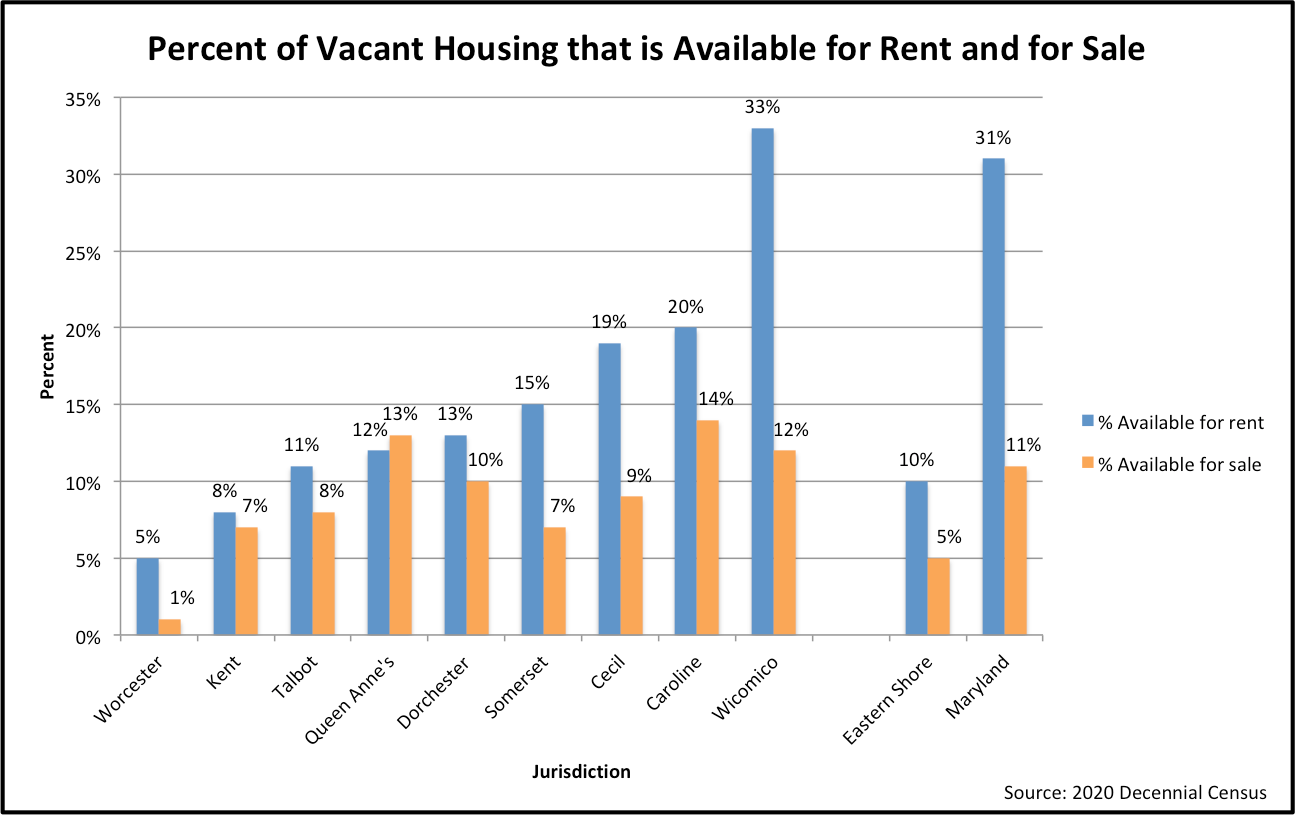Vacation Housing on the Shore vs. Affordable Housing

Tourism is a major industry on the Eastern Shore and guest accommodations are essential to tourism. In recent years, there has been an explosion of online vacation rentals supplementing traditional hotel, motel, and bed-and-breakfast rooms for overnight visitors. The best known of these online vacation rental services is AirBNB, specializing in short term rentals (STRs), or the rental of entire apartment units or houses to tourists for less than 30 days.
AirBNB originated in 2007, but other online rental websites are older, like Vrbo (Vacation Rentals by Owner), which first took bookings in 1995. As soon as it became clear that people were comfortable listing rooms, apartments, and houses online, and that other people were comfortable using the internet to make their reservations, other websites appeared. AirBNB is the most successful and best known, and has become shorthand for the entire industry. Nationwide, the STR industry has increased 800% since 2011.
During the pandemic, interest rates were low and people were looking to escape from the cities, so investors bought up a lot of real estate and converted it into STRs. Profits were good, as many people were more comfortable staying in a rental house or apartment rather than a hotel room, and the STR business boomed.
As Business Insider wrote in a recent article, it was the "wild west" time of online vacation rentals. But the boom has turned into a bust in many places, with an oversupply of STRs. Local governments are faced with trying to curb the problems created by vacation rentals — noise, garbage, bad behavior, decreasing property values — while trying to cash in on the revenue generating aspect of STRs, i.e., occupancy taxes.
But the more troubling aspect of the conversion of properties into STRs is the fact that a large number of housing units were taken out of the long term housing market, reducing the number of properties available to residents to rent and buy, and raising rents and purchase prices of those left available.
As reported by Granicus (a company that provides web services and vacation rental tracking services for the public sector), “recent academic research seems to justify that citizens and local politicians have good reasons to be concerned about the impact of short-term rentals on housing affordability.” And anecdotal evidence abounds of people forced out of their rental housing situations because owners are converting their houses and apartments to more lucrative STRs.
A paper published by Harvard Law & Policy Review explained that the STR industry — understandably — emphasizes its positive effects on tourism, while critics contend that STRs harm neighborhoods, distort the housing market through living unit conversion, undermine labor unions, and exacerbate the affordable housing crisis.
The result has been to exacerbate the affordable housing crisis on the Eastern Shore, as STRs help increase rent and purchase prices, and reduce affordable housing stock. Axios Markets reported on May 31 that, “relative to prices in late 2019 — before covid — nationwide home prices were roughly 40% higher in April, according to the Federal Housing Finance Agency. There aren't that many homes on the market, and that's keeping prices from actually falling much.”

The Census Bureau recently released new housing data from the 2020 Census. Some of the data describe the types of vacant housing: available for sale, available for rent, and units for seasonal, recreational, or occasional use (referred to as seasonal in this article). Second homes, weekend homes, and vacation rentals are included in that last category. A housing unit was classified as vacant if it was unoccupied at the time of the 2020 Census.
The Eastern Shore’s nine counties taken as a region have a large percentage (70%) of seasonal units, and a relatively small percentage (15%) of units available for rent or sale. Of Maryland’s vacant housing, 27% is for seasonal use, and 42% is available for rent or sale.
There is an inverse relationship among the Eastern Shore counties between percentage of seasonal units and units available for rent and sale — when one of those categories is large, the other is small, and vice versa.
It is no surprise that Worcester County leads the Shore with 88% of vacant housing as seasonal units and only 7% of vacant units available for long-term rental or for sale. On the other end of the spectrum, Caroline and Wicomico counties, with the least amount of tourism activity, have fewer seasonal units and more units available for rent or sale. Kent and Talbot counties, both with a lot of shoreline, have large percentages of seasonal units.

A breakdown of vacant units into those available for long-term rent and those available for sale shows a similar ranking among the Eastern Shore counties.
It remains to be seen how local governments will address this issue, if at all. Local governments have had two responses: either allow vacation rental listings to multiply unchecked or cap the number of permitted rentals. The former option creates a glut of listings with lower rents and empty rooms; the latter option preserves investor income and often placates neighbors. Potential tax revenue weighs heavily into these decisions, as many jurisdictions levy a room or hotel tax on STRs. How to keep track of these properties is one problem.
But the bigger problem is the loss of properties for long-term rental and for sale. The Eastern Shore counties have a shortage of affordable housing for teachers, police, and the very workers who cater to the tourism industry. Where will they live?
Jan Plotczyk spent 25 years as a survey and education statistician with the federal government, at the Census Bureau and the National Center for Education Statistics. She retired to Rock Hall.
Common Sense for the Eastern Shore







